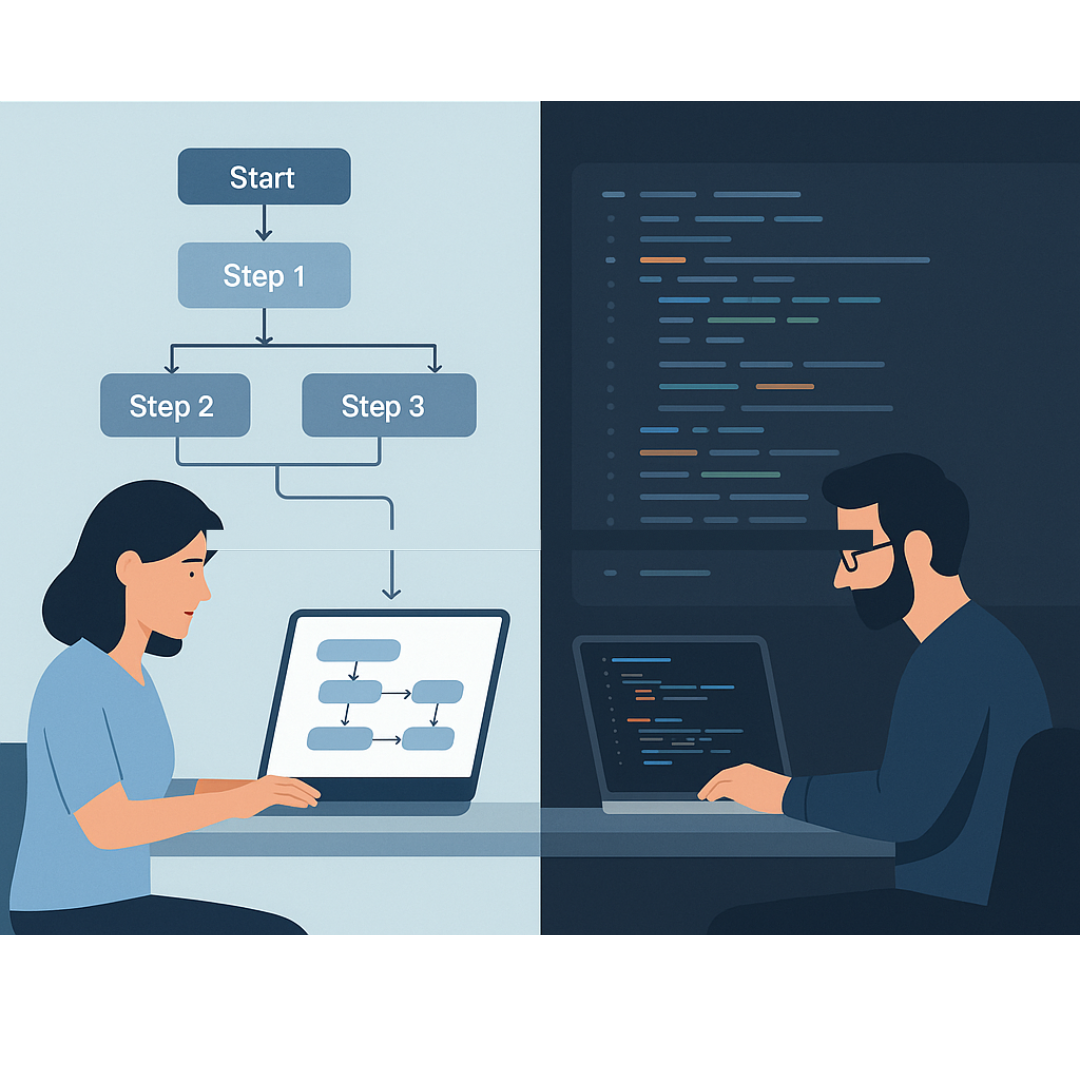What’s the right size team for building digital projects?
If you’re a certain age, you might remember the childhood game of “telephone.” That quaint game of yesteryear also holds a lesson about teams for digital product development.
In the game, one child would whisper a message into the next one’s ear, and it would be relayed in the same fashion until it got to the last person in line. That child would then say the message aloud, and it invariably was different than the original.
The more children in line, the more the message changed. Laughter would ensue as the group tried to figure out who made the mistake.
It’s no laughing matter, but the same dynamic can happen if a digital product development team is not formed properly. Not only can messages be misunderstood, but other inefficiencies can doom the project.
Having seen and been a part of countless digital product development teams in partnership with our clients, we have developed a philosophy of what the right team looks like. There are three basic components when it comes to forming a team.
It needs to be the right size.
It needs to have people in the right roles.
It needs to have the right partners.
Right size – bigger is not better
Try saying the following sentence with a straight face: “That committee really worked efficiently and got things done fast!”
You can’t do it, can you? That’s because committees by nature are slow, inefficient, and ineffective. Yet too often, when faced with a problem, companies throw bodies at it, essentially forming committees rather than teams. We’ve seen teams (sorry, committees) that included as many as six developers, not to mention people from marketing and the business unit.
There are several quotes from influential business leaders about team size, but our favorite is from Jeff Bezos, founder of Amazon. He said, “If you can’t feed a team with two pizzas, it’s too large.”
While some of us may like pizza more than others, the idea that teams should be kept to a minimum headcount is valid for a few reasons:
Small teams communicate better. It’s simple math, but the fewer people there are on a team, the less likely there is to be any misunderstandings. Communication is critical to any endeavor involving more than one person, and the closer that number is to one, the easier it is to communicate clearly.
Small teams are more accountable. With large teams (committees), it’s easier and more likely for people to not pull their own weight, hiding behind the efforts of others without being detected. This not only wastes hours and slows progress, but it also can lead to resentment.
That doesn’t happen on small teams. People naturally want to do more because they feel vital to the team and to the mission. Team members are more involved, accountable, and invested in the process, which leads to the third point.
Small teams are more nimble. A key part of the digital product development process is learning. As we’ve discussed in previous articles, it doesn’t work when a product’s parameters are dictated from corporate and turned over to a group of developers to execute.
For a new product development team, it has to be okay to experiment and fail, and to learn from those experiments. On small teams, the learning curve is accelerated, as members are able to more quickly see what works and what doesn’t, and pivot accordingly with little explanation (because communication is easier).
Finally, there is an intangible dynamic, an esprit de corps, a togetherness that is more common in small teams. It’s not a guarantee, but small teams are more likely to buy into the mission, support each other, and attack the project with more gusto.
It’s an us-against-the-world dynamic, a pride of ownership that comes from a small team of people, each with special skills and abilities, doing their parts to accomplish a common goal.
Of course, the team has to have the right roles filled.
Right roles – skillset and mindset
For large companies, identifying the right people to take on roles within a product development team may seem like the easiest part. But it’s more difficult than it seems, and there is often at least one glaring omission.
The usual process starts with a product or marketing manager having an idea for a digital product that fills a perceived customer need, enhances the sales process, or otherwise makes life easier for customers. They get the idea approved and funded by corporate, and a team of developers is pulled in from IT.
It looks good on paper. People who work in corporate IT certainly have a great deal of technical knowledge, but it often does not include the knowledge needed to build new platforms. For example, they may not have skills in the newer technologies and oftentimes haven’t worked side-by-side with user-experience designers.
But the mindset is not. People who work in corporate IT are used to working within a certain structure and set of rules. They don’t speak the language of building digital products, and they will naturally limit the product based on that point-of-view.
This is not to say that a corporate IT person doesn’t have a role on the team. That knowledge is important. But there is another role that is crucial and is almost always missing: the user experience (UX) designer.
Contact us – we’re UX designers for hire.
Simply put, the UX designer is the voice of the customer. While other members of the team focus on company capabilities, goals, and competitors, the UX designer looks at the project from the customer’s perspective.
She knows that customer needs, and how they are likely to use the product to solve their problems, must be understood in order for the product to be successful. She plays a crucial role in developing a product that gains user adoption and is ultimately successful.
And in our experience, the UX designer is most often an external partner.
Right partner – a fresh perspective
Imagine you’re working on a project, trying to solve a particularly vexing problem. You’re heavily invested in the project, toiling on it, yet no solution is presenting itself. Your view is colored by what you think is possible and impossible, the politics of your organization, and other priorities that may be languishing on your desk.
In other words, you’re in the weeds.
Then, in walks an outsider, unfettered by the day-to-day realities of your company, offering a fresh perspective. With just a quick overview of the problem, he sheds new light on it and helps you see it in a different way. Suddenly, a pathway to the solution is clear.
That, in essence, is the value of having an external partner on the team. Someone who can view the issue from a different angle, help identify what the real problem is, and start to figure it out.
As we mentioned above, the UX designer is typically going to come from outside an organization. Most corporations don’t build digital products on a regular basis, so they simply don’t have UX people on staff. But other functions benefit from an external perspective, too, including developers, project management, and even marketing.
Coming from outside an organization, external partners just aren’t weighed down by corporate bureaucracies and politics. They have the freedom to think big, fail fast, learn and adjust quickly.
For most projects, external partners can be a vital part of the team.
—
Developing a digital project is a huge undertaking that is foreign to most corporations. It often represents a significant commitment of time and resources.
The success of the project depends on many factors, perhaps none more important than the team. The most effective teams are usually small and nimble, with the right people filling a few vital roles, and include some external partners.
While there are other factors that affect a team’s dynamics, its makeup goes a long way toward determining how well they work together, efficiently and effectively, to accomplish the goal.



